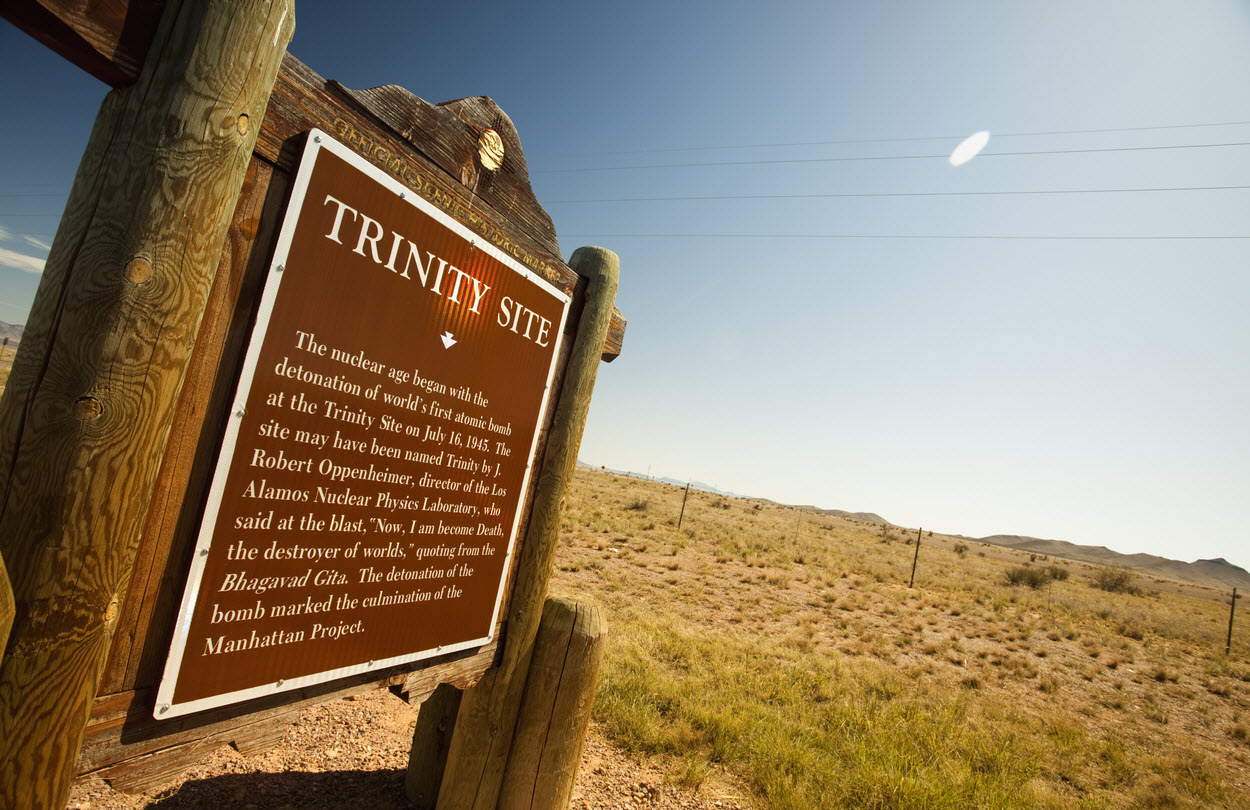| By Elizabeth Mohn |
The blockbuster hit movie Oppenheimer made headlines throughout the United States when it premiered to large audiences and a great deal of media attention in July 2023. The movie is a biopic of scientist J. Robert Oppenheimer, who is best known for his work helping to develop the world’s first atomic bomb. The movie focuses on Oppenheimer’s life during and after the development of the bomb—and also gives insight into the top-secret U.S. government program the Manhattan Project, which was responsible for the bomb’s creation and the famous Trinity test, during which scientists observed the first explosion of a functioning nuclear weapon.
Thanks to the film and its popularity, many Americans have a renewed interest in Oppenheimer, the Manhattan Project, the atomic bomb, and related events from this period of history. Gale In Context: High School is an excellent resource for teachers and students who want to learn more about these and other related topics.
The Race to Make the Bomb
One of the topics that people have become interested in, thanks to the film, is the top-secret program to build a nuclear weapon. Students and teachers can learn more about this program in the Gale In Context: High School Manhattan Project portal. From the portal’s overview, students will learn that project first came about because German scientists began researching the possibility of creating nuclear weapons in the late 1930s. As the U.S. government learned about the German investigations, U.S. leaders began funding research on the same topic in the United States. The government eventually created the top-secret research project the Manhattan Project, led by Brigadier General Leslie R. Groves as the military director and Oppenheimer as the scientific director.
Students interested in learning more about Oppenheimer and his role in the project might be interested in this biography of Oppenheimer, which tells more about the scientist’s upbringing and personal life. Students might also be interested in reading this letter from President Franklin D. Roosevelt to Oppenheimer, which gives further insight into the challenging work the scientists involved in the project undertook. In July 1945, the scientists were rewarded when they successfully tested the first atomic bomb detonation in the Trinity test.
Atomic Bombs and Nuclear Weapons
Students interested in Oppenheimer’s life and the history of the Manhattan Project may want to learn more about the weapons that scientists developed because of them. Teachers and students can better understand these weapons through the Gale In Context: High School Atomic Bomb portal and Nuclear Weapons portal. In the portal overviews, students will learn that an atomic bomb is one of numerous types of nuclear weapons. They’ll also learn that the Cold War was fueled in part by the United States and the Soviet Union attaining the ability to produce nuclear weapons.
These portals offer numerous sources—including biographies, magazine articles, and primary sources—that will help students better understand the development of nuclear weapons during the last century. In addition to helping them understand the history of these weapons, the featured resources will help them understand the science that allows them to function. For example, students can learn about splitting atoms in this SciShow video clip.
Remembering the Terrible Cost of Nuclear Weapons
Although the film Oppenheimer focused primarily on the development of the atomic bomb and the individuals who sacrificed to achieve the Manhattan Project’s goal, the film also alludes to the destruction and violence that would follow their creation. In August 1945, soon after the Trinity test, the United States deployed atomic bombs on civilian populations in Hiroshima and Nagasaki, Japan. Students can learn basic information about the two attacks in the Hiroshima and Nagasaki portal. For example, in the portal’s overview, students will learn that on August 6 and 9, 1945, the United States dropped atomic bombs on urban populations, killing tens of thousands of people instantly and condemning tens of thousands more to death in the coming days, weeks, and months. Japan surrendered after the United States dropped the second bomb, causing World War II to end officially.
Teachers can use the resources in the portal to help students gain a deeper understanding of the devastation many Japanese citizens faced after the bombings. For example, this audio broadcast includes stories from survivors of the attacks. Teachers can encourage students to explore the resources in the Images section of the portal, where students can find images of the bomb detonating, the aftermath of the bombings, and the memorials that people have erected to honor the victims. Students will also find infographics that help viewers better understand nuclear weapons and the attacks on Hiroshima and Nagasaki.
Making Connections Between the Past and Present
Relating history topics to modern popular culture, such as the film Oppenheimer, can be an excellent way to spark students’ interest in history topics. Teachers can link the historical events students learn about through Gale In Context: High School resources to current events to help students apply the knowledge they’ve gained to their real lives. For example, as students learn about the various types of weapons invented after the first atomic bomb test in the United States, teachers can suggest thinking about how the science and ethics of developing and storing nuclear weapons have changed since the 1940s.
Teachers can encourage students to think about how the terrible consequences of the bombings of Hiroshima and Nagasaki may influence militaries and other organizations. Inspiring students to make connections between historical events and current events will not only help them better understand the past but will also help them think deeply about nuclear proliferation and other current events.

About the Author
Elizabeth Mohn is a writer and an educational content developer. When she’s not reading or writing, Elizabeth is usually spending time with her family, listening to podcasts, or working in her garden.




